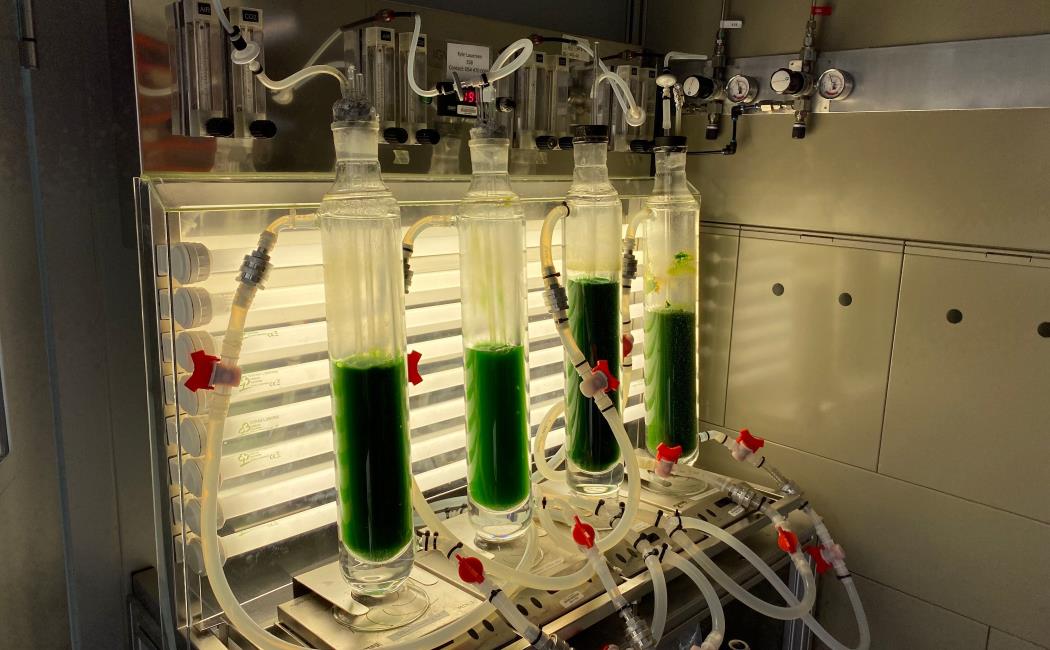
Modifying algae to make rare antioxidants in extreme environments
06 July, 2023
In a collaborative between King Abdullah University of Science and Technology (KAUST) and the Arizona Center for Algae Technology & Innovation (AzCATI) at Arizona State University (ASU), scientists genetically engineer algae to produce orange-red pigments that make sea food healthier and are widely applicable in textiles and medicine.
Using the fully sequenced genome of the alga Cyanidioschyzon merolae, the researchers insert new genes that code for production of orange-red pigments. This causes the blue-green coloured alga to produce orange-red antioxidants commonly used in food and animal health but difficult to find in nature.
The antioxidants, canthaxanthin and astaxanthin, are chemicals called carotenoids which are a class of yellow-orange-red natural pigments responsible for the colour of tomatoes and carrots, and the pink of salmon and flamingos through diet.
Astaxanthin is a powerful antioxidant known to make organisms that eat it healthier. Introducing astaxanthin to the diets of animals such as farmed shrimp can improve their health and enhance their red colour. The carotenoid pigments can also be used as natural dyes for textiles and have wide nutraceutical and pharmaceutical applications.
Dr. Kyle J. Lauersen, Assistant Professor of Bioengineering at KAUST and senior author of the study, says: “We are excited because this is the first time genetic engineering has been used to change natural carotenoid pigments in a red alga. Genetic engineering of algae can help produce important natural chemicals like carotenoids sustainably. Algae has untapped potential as a sustainable solution which could benefit both the food and health industry, and the science shows it is possible to scale.”
The alga also contains a light-capturing blue pigment called phycocyanin which is used as a blue food colouring in confectionary and drinks. The scientists found production of canthaxanthin and astaxanthin did not reduce phycocyanin in the alga, meaning both blue and orange-red pigments can be produced together at once.
Growing algae requires optimal levels of sunlight, trace nutrients and carbon dioxide (CO2). The engineered algae in the study demonstrated tolerance to high levels of CO2 and high temperatures, which is relevant for growing in specific environments, for example, hot urban areas during summer months in Saudi Arabian or American deserts. As Cyanidioschyzon merolae is natively found in extreme environments with high temperatures, it is a promising candidate for local production in these areas.
Dr. Peter J. Lammers, Research Professor at the School of Sustainable Engineering and the Built Environment at ASU and co-corresponding author of the study, adds: “These acid-loving red algae have great potential for safe and innovative industrial applications. Their ability to grow in acidified waste afford options for circular economics and renewable materials that could sustain future generations. Together with KAUST, our long-term goal is to eliminate waste and use bioengineering to benefit humans and nature simultaneously. This study is the first of many that will harness biochemical pathways to generate renewable options for chemicals used every day.”